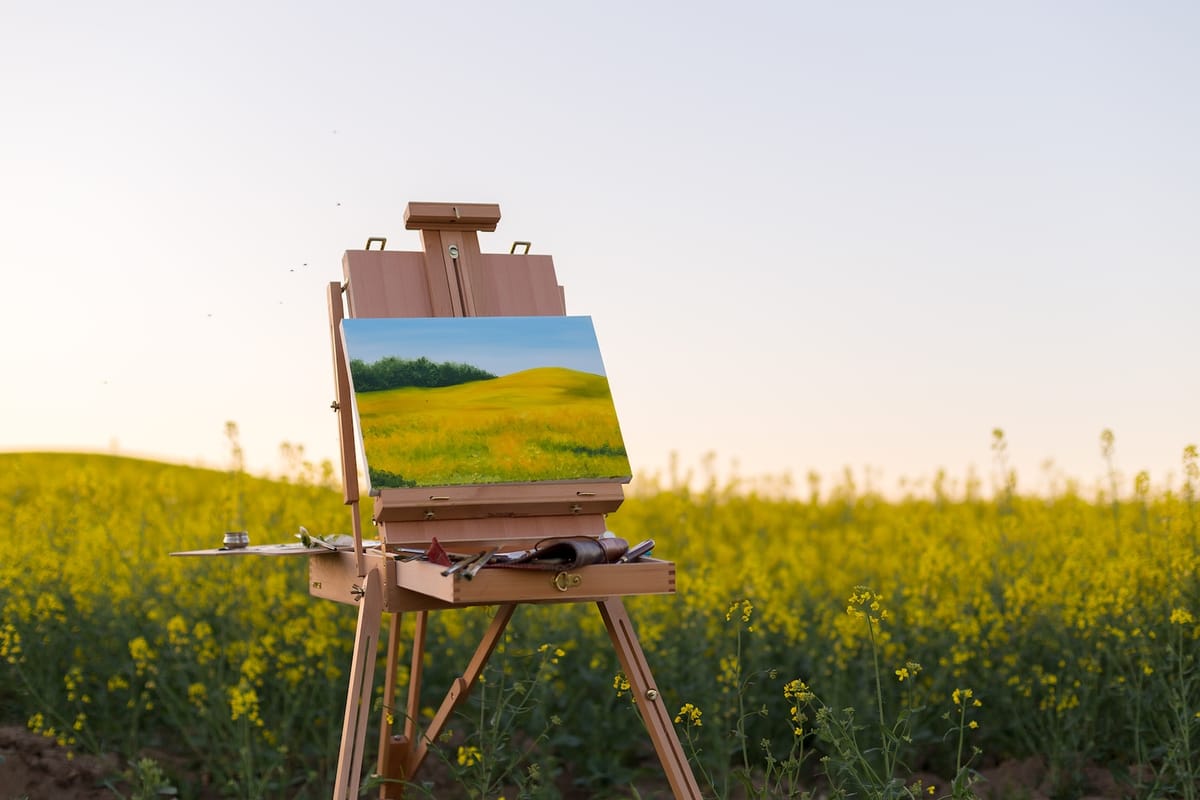

Getting Started with Landscape Painting
Landscape painting is a captivating art form that allows artists to capture the beauty of nature on canvas. To embark on this creative journey, it is crucial to have the right materials and tools. Here, we will explore the essential supplies you need to get started.
Landscape painting, whether done in the studio or outdoors, requires a combination of skill, creativity, and the right equipment. The first step in any painting project is to ensure you have high-quality materials that will help you achieve the desired results. Here’s a comprehensive guide to the essential supplies you need.
Choosing the Right Paints
When it comes to landscape painting, the choice of paint is paramount. Acrylic paints are a popular choice due to their versatility and quick-drying properties. Here are some key considerations when selecting your paints:
- Quality: Opt for professional-grade acrylic paints that offer vibrant pigments and excellent lightfastness. Brands such as Golden, Liquitex, and Winsor & Newton are highly recommended.
- Colors: Build a versatile palette by choosing colors that mimic nature’s beauty. Earth tones, blues, greens, and vibrant yellows are perfect for landscapes. Consider purchasing pre-made sets designed specifically for landscape painting.
Selecting the Right Brushes
Having the right brushes is essential for creating a beautiful landscape painting. Here are the types of brushes you will need:
- Flat Brushes: These are ideal for crisp edges and broad strokes, making them perfect for depicting large areas of landscapes.
- Round Brushes: Essential for finer details, round brushes allow you to add depth and thin lines to your composition.
- Fan Brushes: Use fan brushes for creating tree foliage, clouds, and texture. They produce beautiful, organic effects.
Picking the Right Canvas or Painting Surface
Selecting a suitable surface for your painting is crucial for creating a successful landscape piece. Here are two popular options:
- Stretched Canvas: These ready-to-use canvases provide a sturdy surface with excellent tooth for acrylic paint adhesion.
- Canvas Boards: Lightweight and convenient, canvas boards are perfect for plein air painting or practice sessions.
Palette and Mixing Supplies
To mix and blend your paints effectively, you need the right tools:
- Palette: Choose a palette that allows you to arrange and blend your colors easily. A traditional wood palette or a disposable paper palette are popular choices.
- Mixing Palette Knife: This tool helps you combine colors smoothly and create beautiful gradations.
Additional Essential Supplies
To ensure a seamless painting process, here are a few more items you may need:
- Masking Tape: Use masking tape to create clean edges and borders in your painting.
- Easel: Invest in a sturdy and adjustable easel to work at a comfortable height and maintain good posture.
- Mediums: Consider investing in mediums that allow you to manipulate your acrylics’ texture and drying time.
- Containers for Water, Paper Towels, and Cleaning Rags: These are especially important for plein air painting to keep your workspace clean and organized.
- Sun Protection Gear, Chair or Stool, and Bug Repellent: These are beneficial for a comfortable outdoor painting experience.
Understanding Your Subject and Sketching
Before you begin painting, take the time to observe and understand your landscape. Start with a sketch to outline your composition and plan the elements, helping to prevent mistakes once you start painting.
Mastering Perspective and Proportion
Study vanishing points and horizon lines to create realistic depth and proportion in your landscapes. Understanding perspective is crucial for creating a convincing and balanced composition.
Playing with Light and Color
Experiment with various lighting conditions to add dimension and mood to your landscapes. The warm glow of a sunset or the soft light of dawn can significantly impact the mood of your painting. Also, explore how colors interact and evoke emotions; use cool blues for a calming scene or bold reds for energy.
Creating Atmosphere and Weather Effects
Capturing the atmosphere can transform your landscapes. Practice painting fog, rain, or wind effects to add drama and realism to your landscapes. Weather effects can significantly enhance the mood and realism of your painting.
In Summary
Landscape painting is a rewarding and creative endeavor that requires the right tools and materials. From high-quality paints and brushes to the right canvas and mixing supplies, each element plays a crucial role in the overall success of your artwork. By understanding your subject, mastering perspective, and experimenting with light and color, you can create stunning landscapes that capture the beauty of nature. Remember, practice and creativity are key to producing beautiful art.
Useful Links
For more detailed instructions and tips on landscape painting, consider visiting these resources:
UrArt Studio
Samuel Earp
Doodlers Anonymous
Chuck Black Art
Dues are $12 per year. Member benefits:
✅ Ad-Free Website Viewing
✅ Advocacy for Republican Seniors
✅ 120+ Senior Discounts
✅ Member Only Newsletters